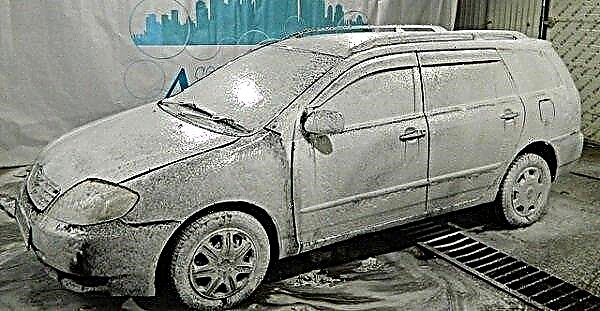

The content of the article:
- General problems
- Symptoms of malfunctions
- Troubleshooting and repair
- Other breakdowns and their elimination
The ignition system of modern cars does not often malfunction, but sometimes it still happens, and then the question of repairing this unit arises before the driver.
You can turn to the service station for help, but many drivers try to solve such issues on their own. However, first you need to find the breakdown itself, which, however, is not such a big problem. Here we will talk about the types of malfunctions, their manifestations and how you can eliminate them on your own.
General problems

There are ignition systems of the following types:
- electronic;
- contact.
Recently, the most popular are contactless, that is, electronic systems. During the operation of any of them, certain problems appear.
In addition to those of them that are inherent only in a certain species, there are also breakdowns of a general type, which include:
- spark plug problems;
- malfunctions of the ignition coils;
- problems with the wired system.
If we talk about electronics, then here you can add more control unit problems. In electronics, transistors sometimes fail, the junction cover breaks. Of course, the manifestation of all these breakdowns can occur in different ways.
Symptoms of malfunctions

Outward signs of incorrect operation of any kind of ignition system may be uneven engine operation - in this case, it may not start at all, or it may start for a very long time. At idle, there will certainly be periodic failures, and while driving, a power shortage may occur.
In an electronic type system, these manifestations have the following reasons:
- The cover of the distribution sensor could break through or the wires could break.
- Do not overlook the malfunction of spark plugs or transistors.
- Broken wire system.
- Bad contact or its complete absence (the presence of this malfunction is determined by the pops of the muffler).
- Significant spark plug gap.
- Excessive fuel consumption. In this case, a malfunction of the regulatory system or candles can be stated.
The electronic system provides for the absence of a large number of contacts, which excludes the occurrence of a malfunction based on their interruption. A sensor is now used instead of contacts. It has a lot of advantages, the main of which is the impossibility of wear and tear, and it does not need to be adjusted all the time.
But the electronic ignition system, of course, has its own problems, and first of all they affect the functioning of the propulsion system - the engine starts to work unstable, and sometimes it is simply impossible to start it. And here are some reasons for these phenomena:
- breakage of the wired system;
- breakdown of the control unit;
- breakage of candles (in some cases, coils may be the culprit);
- failure of the sensors responsible for fixing the crankshaft speed;
- Hall sensor failure.
If the engine power has become noticeably less, and the fuel consumption has increased significantly, then this is clear evidence that the control unit is faulty. Also, problems can be in sensors or candles. But they are all quite solvable. At the same time, it is absolutely not necessary that the parts will have to be changed, sometimes the problem is solved by adjusting some of the system parts.
It is not necessary to blame absolutely everything on the ignition system - problems can be hidden in other nodes.
First of all, the fuel system should be checked. If the carburetor accepts gasoline intermittently, the engine will not run correctly. In addition, damage to the engine system is sometimes associated with a poor connection between the reinforcement hose and the intake pipe. The brake booster may well be faulty.
Troubleshooting and repair

Candles are one of the most important components of the ignition system. The functioning of the engine depends on their correct operation and normal state. In order for these units to work as long as possible, experts recommend dismantling the distribution cover and wiping it with a rag after 10,000 km. The rags should be soaked in gasoline. And after 20,000 km, you also need to lubricate the camshaft with oil - just a few drops will be enough for this.
You also need to periodically pay attention to the state of the candles. If carbon deposits are found on them, the candles should be soaked in gasoline for a while, and then treated with a metal brush.
But you do not need to clean the candles - it is much easier to simply replace them with new ones. It is recommended to replace the spark plugs every 30,000 km.
By the way, if the engine is reluctant to start in winter cold, it is better to replace the candles, after which it will be much easier to start the car.
At the same time, there is no need to rush to destroy old candles - they may well come in handy in the summer. At this time, they will work correctly.
But prevention is, of course, good, but still sometimes you have to make a complete replacement of the system. Most motorists entrust this work only to professionals, but some decide to do it with their own hands. Below we will look at some of the options for malfunctions of the ignition system and how to solve them.
Other breakdowns and their elimination

If the engine does not start when the ignition is on, then, first of all, you must turn off the ignition system and try to start the engine again after a few seconds. If all this did not give any results, perhaps it makes sense to check the correctness of the installation of the candles - it could well turn out to be incorrect. If all these actions do not give any results, then you will have to subject the entire system to a thorough check.
It may also turn out that the cause of the malfunction is in the distributor cap. It must be carefully dismantled and thoroughly checked on both sides. In addition, it is necessary to examine the graphite ember - it could well have worn off. In case of wear of the cover, when its surface is cracked or covered with carbon deposits, it is better to replace the cover, it cannot be repaired. The same should be done with graphite charcoal.
Attention! All wiring must be well fixed, because if it comes into contact with other nodes, then its insulation will wear out very quickly.
A short circuit can occur due to the ingress of working fluids on the wiring. Therefore, when diagnosing the condition of the ignition system, you should pay special attention to the condition of the wiring. Having found moisture on them, you should definitely wipe it off, because this may well cause a poor-quality engine start.
If scratches or other mechanical damage are found on the wiring, it must be replaced. If this is not yet possible, you should wrap the problem areas with electrical tape. The ignition coil is checked with an ohmmeter. The resistance must be in accordance with the norm, otherwise the coil will have to be replaced.
It is highly not recommended to repair the ignition lock on your own. You can only check the contacts and clean them if oxidation is detected.

Consider the switch too, because breakdowns in this unit are quite often the reason for the incorrect operation of the ignition coils. The switch is tested with a portable lamp.This is done as follows: the wire that goes from the switch terminal is disconnected from the coil, and then its end is connected to the carrier. The other carrying wire is connected to the coil terminal. Then the ignition is turned on, and the car is started by means of the starter. To do this, the crankshaft will have to be rotated a couple of times. If the light in the carrier is on without interruption, then the switch is indeed defective. Then the problem can only be solved by replacing it.
It may also happen that all the wiring is in good order, but the pulses still do not go to the switch. Most likely here defective proximity sensor... It is checked with a voltmeter. This is done as follows: with the ignition off, begin to carefully scroll the crankshaft. In this case, you need to monitor the devices. If the sensor is working properly, then their readings will change dramatically. If this does not happen, it is possible to ascertain a sensor malfunction, then it must be replaced.
Spark plugs are checked with a "spark". To do this, remove the wire from the candle and bring its end to the mass at a distance of 5-6 mm. After that, you should turn the crankshaft and look at the gap. If a spark is visible, then the system itself is in good order, and all that remains is to change or clean the candles. During this procedure, you cannot do without an assistant who will have to turn the crankshaft.
In this way, the covers of the distribution system can also be checked. The central wire is disconnected from it, and its end is brought to the mass, leaving a gap of 5-6 mm. In this case, you also need to rotate the crankshaft. When a strong spark appears, it is possible to ascertain the fact of normal operation of the circuit, and the problem may be in the cover or in the rotor.
The rotor cannot be repaired, it can only be replaced. But if the resistor burns out, the problem can be solved with a piece of wire. Aluminum and copper wires can be used. A jumper is made from it, which is inserted between the contacts of the router. Of course, this measure is temporary, and one should resort to it only when it is not possible to solve the issue by installing a full-fledged resistor. For example, this can happen while driving. Do not forget also that a piece of inserted wire causes radio interference, which can spread not only in the cabin, but also near it.
The reason for the absence of a spark may also be a poor contact of the breaker. Poor contact is a common cause of cylinder failure. When checking contacts, you need to ensure that they are in close contact with each other. Any contamination of the contacts with rust or carbon deposits will necessarily reduce the tangent area, and this will certainly cause a complete loss of contact.
Sometimes the contacts should be cleaned non-aggressively. To do this, use a file. You can clean the contacts with a rag. After cleaning the contacts, rotate the crankshaft until they are completely closed. If any contact does not fit tightly, you need to bend its stand.
As you can see, a variety of breakdowns in the ignition system can be eliminated on your own. But if you do not feel complete self-confidence, then it is better to seek help from specialists who will do everything professionally.











